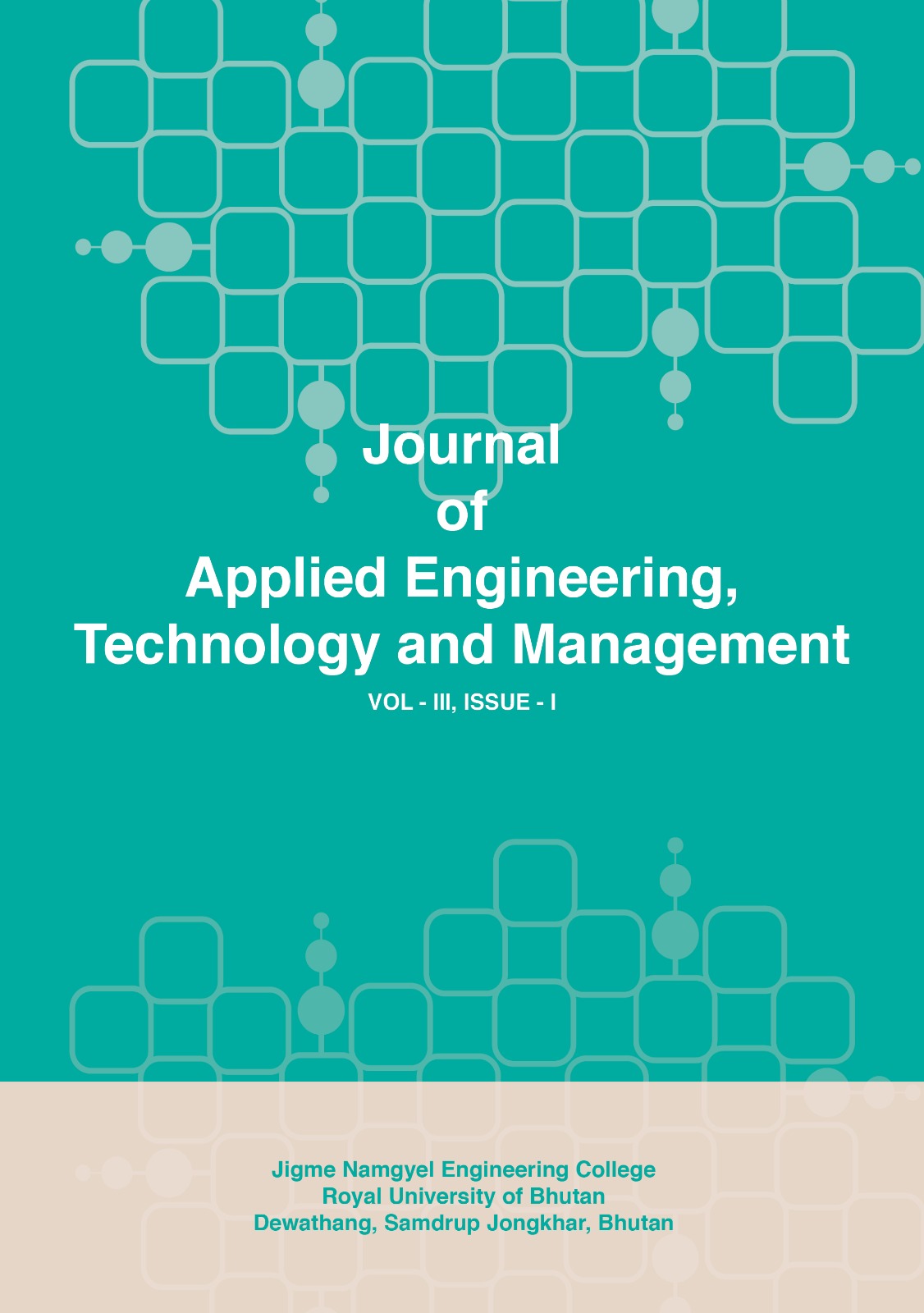RECYCLED AGGREGATE CONCRETE (RAC): A viable solution for sustainable construction
DOI:
https://doi.org/10.54417/jaetm.v3i1.111Keywords:
recycled aggregate concrete, natural aggregate concrete, construction and demolition waste, Polypropylene fiber, life cycled cost analysisAbstract
Construction activities are booming in and around the cities with development and modernization. As a result of these constructions, natural aggregates are being extracted. Simultaneously, there is a significant amount of construction and demolition waste (CDW) generated due to the demolition of structures either due to the structure attaining service life or fashion and the ongoing trend of reconstruction. Therefore, recycling coarse aggregate from CDW in concrete is one of the sustainable solutions to prevent a serious threat to the environment due to the extraction of virgin aggregates and landfilling. This paper presents the results of a study undertaken to examine the influence of recycled concrete aggregate on the properties of new concrete and its life cycle cost (LCC) analysis. It is clear from the test that the strength of RAC is much lowered than natural aggregate concrete (NAC). In order to achieve the optimum strength, the natural aggregate is replaced by recycled aggregate within a range of 0% to 100%, in intervals of 10%. Additionally, to enhance its strength further, reinforcing RAC with new and recycled polypropylene (PP) fiber is done in percentages ranging from 0.25% to 2% by weight of cement with an interval of 0.25%. For analysis, compression, and split tensile strength tests were performed at the end of 28 days of the curing period. The result revealed that 40% replacement of natural aggregate with recycled aggregate achieves the ideal percentage replacement without compromising the strength. Moreover, incorporating 1.5% of new PP fiber or 1.25% of recycled PP fiber in the RAC provides optimum strength. For LCC analysis, the initial investment cost, operations, and maintenance cost, and salvage cost of all the alternatives are compared. Through this analysis, it was determined that the LCC of concrete manufactured using recycled aggregate as concrete ingredients is the lowest. Consequently, incorporating recycled aggregates in concrete production reduces the LCC compared to using natural aggregates.References
K. A. Suluguru, A. Kar, A. Guharay and N. James, "Experimental Studies on Physical Properties and Strength Response of Construction and Demolition Wastes," p. 635, 2019.
V. Nitivattananon and G. Borongan, "Construction and Demolition Waste Management: Current Practices in Asia," in Proceeding of the international conference on sustainable solid waste managment, Chennai,India, 2007.
E. c. D. ENV, "Service contract on management of construction and demolition wastse-SR1," BIO intelligence service, Paris, 2011.
J. Pokorný, R. Ševčík, J. Šál, and L. Zárybnická, "Lightweight blended building waste in the production of innovative cement-based composites for sustainable construction," ScienceDirect, vol. 299, 2021.
K. Wangmo, "Population and Housing census of Bhutan," National Statistics Burea of Bhutan, Thimphu, 2017.
"Construction and demolition waste in Denmark," Copenhagen, Delotte, 2015.
J. d. Brito and . N. Saikia, Recycled Aggregate in Concrete, London: Springer-Verlag , 2013.
N. Kumar, V. Rao, T. Madhu, N. Saroja and Prasad, "An expermental study of recycled concrete with polyporpylene fiber," International Journal of Innovative Research in Advanced Engineering, p. 67, 2014.
N. Jadhav, O. Gundga, C. Ghojag, B. Jare and A. Kolte, "To check the feasibility of Coconut Fiber and Polypropylene Fiber in Concrete," International Research Journal of Engineering and Technology (, pp. 1821-1822, 2017.
P. K. Tiwari and R. Nateriya, "Replacement of recycled coarse aggregates with natural coarse aggregates in concrete," International Journal of Scientific Engineering and Applied Science (IJSEAS) – Volume-2, Issue-7, pp. 174-183, 2016 .
A. A. Azzawi, "Mechanical properties of recycled aggregate concrete," Asian Research, Baghdad, 2016.
C. Saketh, J. M. Patel, M. Rasjesh, G. Sadanand and M. Manoj, "Statistical Analysis of Polypropylene Fibre Reinforced Concrete," International Journal of Advance Research, Ideas and Innovations in Technology, p. 518, 2017.
M. R. Latifi, Ö. Biricik, and A. M. Aghabaglou, "Effect of the addition of polypropylene fiber on concrete properties," Journal of Adhesion Science and Technology, vol. 36, no. 4, pp. 345-369, 2021.
C. Fischer and M. Werge, "EU as a Recycling Society," European Environment Agency, 2009.
K. Källström, "Life cycle assessment and life cycle costing," 2015.
T. Mearig, L. Morris and M. Morgan, Life Cycle Cost Analysis Handbook, State of Alaska: Department of Education & Early Development, 2018.
P. Belin, G. Habert, M. Thiery and N. Rouseel, "Cement paste content and water absorption of recycled concrete coarse aggregates," pp. 1-18, 2013.
Downloads
Published
How to Cite
Issue
Section
License
Copyright (c) 2023 Copyright (c) 2021 Journal of Applied Engineering, Technology and Management (JAETM)

This work is licensed under a Creative Commons Attribution-NonCommercial 4.0 International License.


